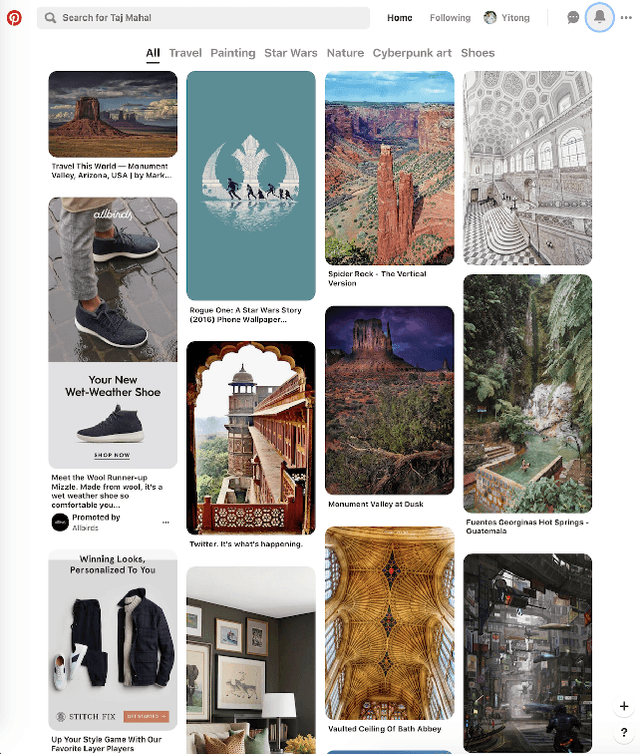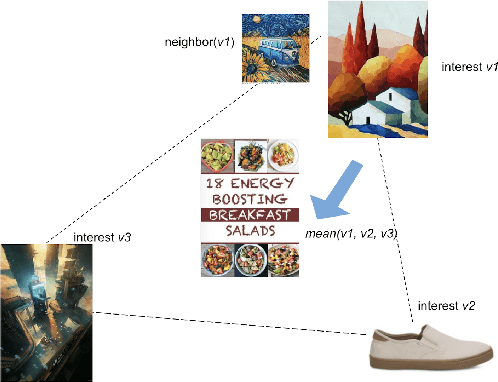Chantat Eksombatchai
Taming the One-Epoch Phenomenon in Online Recommendation System by Two-stage Contrastive ID Pre-training
Aug 26, 2025Abstract:ID-based embeddings are widely used in web-scale online recommendation systems. However, their susceptibility to overfitting, particularly due to the long-tail nature of data distributions, often limits training to a single epoch, a phenomenon known as the "one-epoch problem." This challenge has driven research efforts to optimize performance within the first epoch by enhancing convergence speed or feature sparsity. In this study, we introduce a novel two-stage training strategy that incorporates a pre-training phase using a minimal model with contrastive loss, enabling broader data coverage for the embedding system. Our offline experiments demonstrate that multi-epoch training during the pre-training phase does not lead to overfitting, and the resulting embeddings improve online generalization when fine-tuned for more complex downstream recommendation tasks. We deployed the proposed system in live traffic at Pinterest, achieving significant site-wide engagement gains.
* Published at RecSys'24, see https://dl.acm.org/doi/10.1145/3640457.3688053
PinnerSage: Multi-Modal User Embedding Framework for Recommendations at Pinterest
Jul 07, 2020



Abstract:Latent user representations are widely adopted in the tech industry for powering personalized recommender systems. Most prior work infers a single high dimensional embedding to represent a user, which is a good starting point but falls short in delivering a full understanding of the user's interests. In this work, we introduce PinnerSage, an end-to-end recommender system that represents each user via multi-modal embeddings and leverages this rich representation of users to provides high quality personalized recommendations. PinnerSage achieves this by clustering users' actions into conceptually coherent clusters with the help of a hierarchical clustering method (Ward) and summarizes the clusters via representative pins (Medoids) for efficiency and interpretability. PinnerSage is deployed in production at Pinterest and we outline the several design decisions that makes it run seamlessly at a very large scale. We conduct several offline and online A/B experiments to show that our method significantly outperforms single embedding methods.
* 10 pages, 7 figures
Pixie: A System for Recommending 3+ Billion Items to 200+ Million Users in Real-Time
Nov 21, 2017



Abstract:User experience in modern content discovery applications critically depends on high-quality personalized recommendations. However, building systems that provide such recommendations presents a major challenge due to a massive pool of items, a large number of users, and requirements for recommendations to be responsive to user actions and generated on demand in real-time. Here we present Pixie, a scalable graph-based real-time recommender system that we developed and deployed at Pinterest. Given a set of user-specific pins as a query, Pixie selects in real-time from billions of possible pins those that are most related to the query. To generate recommendations, we develop Pixie Random Walk algorithm that utilizes the Pinterest object graph of 3 billion nodes and 17 billion edges. Experiments show that recommendations provided by Pixie lead up to 50% higher user engagement when compared to the previous Hadoop-based production system. Furthermore, we develop a graph pruning strategy at that leads to an additional 58% improvement in recommendations. Last, we discuss system aspects of Pixie, where a single server executes 1,200 recommendation requests per second with 60 millisecond latency. Today, systems backed by Pixie contribute to more than 80% of all user engagement on Pinterest.
 Add to Chrome
Add to Chrome Add to Firefox
Add to Firefox Add to Edge
Add to Edge